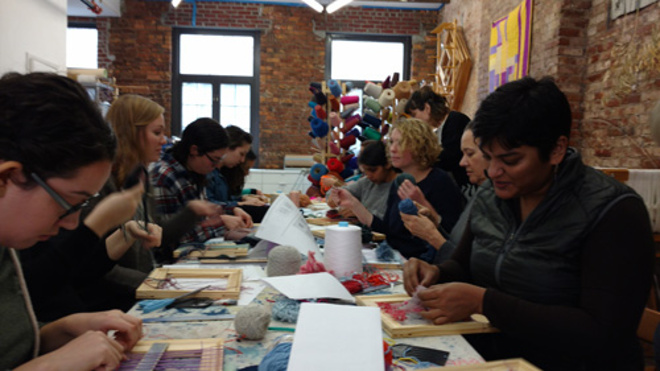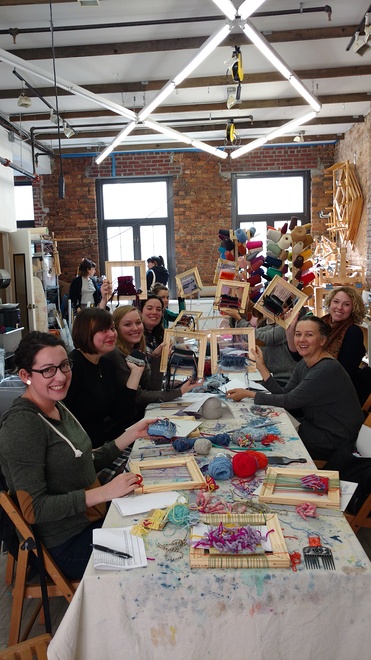
As part of Bard Graduate Center’s mission to provide its students with the experience of working directly with various media, fourteen students accompanied by Postdoctoral Fellow Urmila Mohan and Professor Michele Majer visited the Textile Arts Center in the West Village on February 5 to learn the technique of tapestry weaving. Isa Rodrigues, a textile artist and educator from the south of Portugal and one of the founding team members of TAC, led the workshop. Rodrigues began by reminding us that although we may be most familiar with tapestries of the medieval and Renaissance periods, tapestry production has been in use from antiquity to the present.
Participants took up their 10-inch square wooden frames and created a warp by winding a woolen yarn around the upper and lower edges of the frame. Next came the difficult decision of which colors and thicknesses of yarn to select for the wefts, among the many tempting possibilities. “True” tapestry employs plain weave, in which individual wefts pass regularly over and under individual warps; the design is built up by discrete areas of color created by closely packed discontinuous wefts, which hide the warps. Rodrigues guided students in the three primary ways of joining colors whereby weft threads abut one another (“slit”), overlap one another around the same warp (“dovetail”), or interlock around the same warp. Each of these produces a distinct visual effect that, depending on the yarns’ colors, results in a contrast or subtle gradation of hues. Rodrigues ended the workshop with a demonstration of Turkish knotting, and many students completed their samplers experimenting with some of the thicker yarns cut long enough to create a deep pile.
The tapestry workshop offered students an
insight into and deep appreciation of the consummate creativity and skill of
the tapestry designers and weavers who—using the same basic yet highly
flexible weave structure—produced such masterpieces as the early
sixteenth-century series, “The Hunts of Maximilian” (Musée du Louvre). These
opportunities for hands-on engagement with materials are an important and
integral component of Bard Graduate Center’s curriculum.

